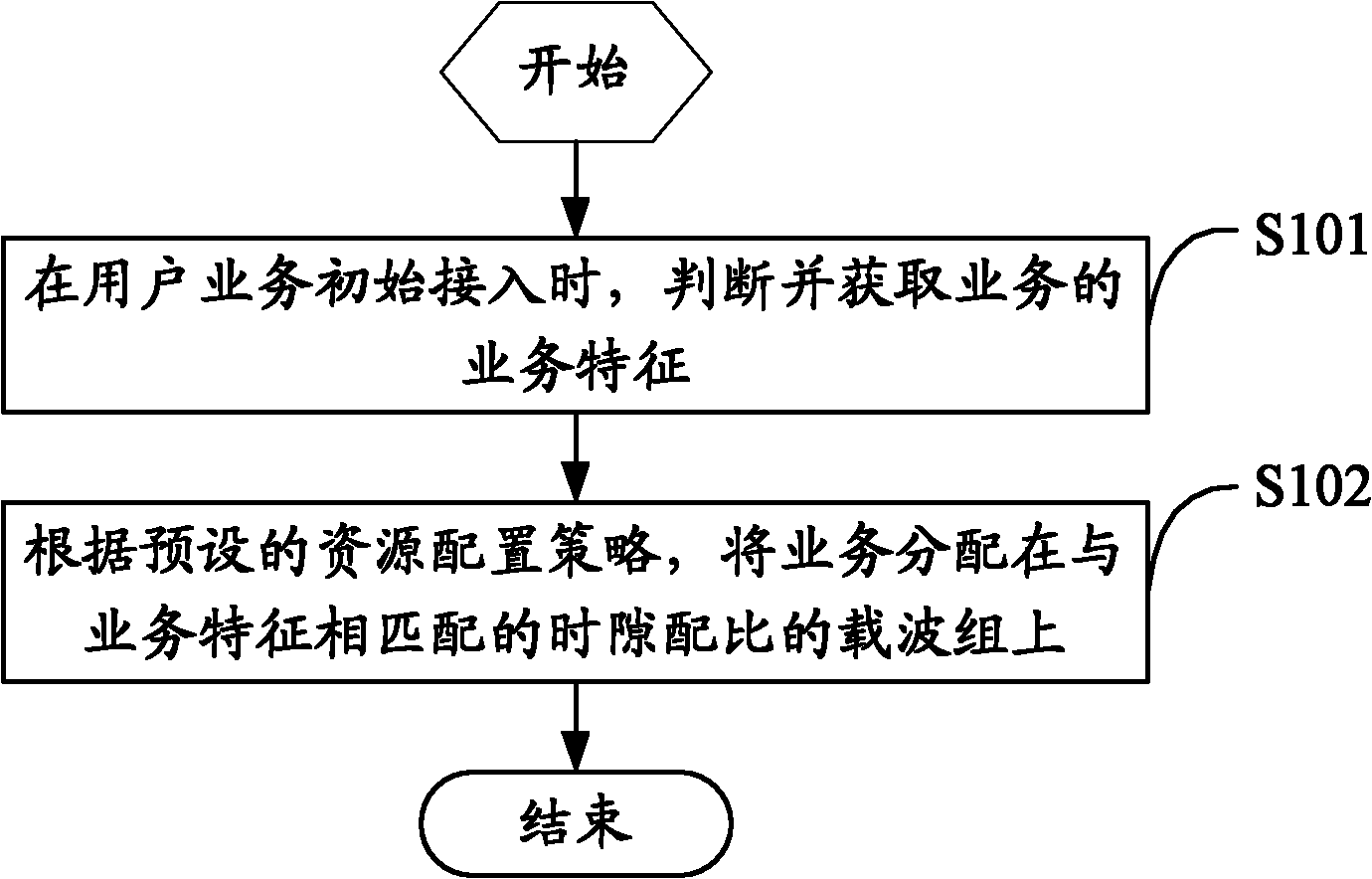Method and device for resource distribution under multi-frequency range group net
A resource allocation and resource allocation technology, applied in network planning, wireless communication, electrical components, etc., can solve problems such as reducing system capacity, service rate limitation, and unusable resources, so as to increase system capacity, improve utilization rate, Avoid the effect of service rate limitation
- Summary
- Abstract
- Description
- Claims
- Application Information
AI Technical Summary
Problems solved by technology
Method used
Image
Examples
example 1
[0084] Example 1. Resource allocation scheme and business symmetry discrimination method:
[0085] 11: When the user initially accesses, judge the service symmetry of the user according to the "RAB Asymmetry Indicator" information element of the RAB parameter in the RAB ASSIGNMENT REQUEST message: if the service is symmetrical in both uplink and downlink directions, perform step 12; if the service is single If the service is asymmetric, go to step 13. If the service is bidirectional asymmetric, go to step 16.
[0086] 12: Allocate users to carrier groups with a time slot ratio of 3:3.
[0087] 13: If the user service is one-way asymmetric downlink, go to step 14; if the user service is one-way asymmetric uplink, go to step 15;
[0088] 14: Allocate users to carrier groups with a time slot ratio of 2:4.
[0089] 15: Allocate users to carrier groups with a time slot ratio of 4:2.
[0090] 16: Determine the uplink and downlink GBR rate of the service obtained from the cell of ...
example 2
[0102] Example 2. Resource allocation scheme and business feature discrimination method:
[0103] 21: When the user initially accesses, the "Maximum Bit Rate" information element of the RAB parameter in the RAB ASSIGNMENT REQUEST message knows the maximum uplink and downlink rate of the service, and judges the user's service symmetry according to the ratio of the maximum uplink and downlink rate. For specific judgments, see step 202 ;
[0104] 22: Determine the value of the uplink maximum rate compared to the uplink and downlink maximum rate, if the value is 1, go to step 23; if the value is greater than 1, go to step 24; otherwise, go to step 25;
[0105] 23: Allocate users to carrier groups with a time slot ratio of 3:3;
[0106] 24: Allocate users to carrier groups with a time slot ratio of 4:2;
[0107] 25: Allocate users to carrier groups with a time slot ratio of 2:4;
[0108] 26: During the service maintenance process, measure the 4A and 4B traffic events of the uplink...
PUM
 Login to View More
Login to View More Abstract
Description
Claims
Application Information
 Login to View More
Login to View More - R&D
- Intellectual Property
- Life Sciences
- Materials
- Tech Scout
- Unparalleled Data Quality
- Higher Quality Content
- 60% Fewer Hallucinations
Browse by: Latest US Patents, China's latest patents, Technical Efficacy Thesaurus, Application Domain, Technology Topic, Popular Technical Reports.
© 2025 PatSnap. All rights reserved.Legal|Privacy policy|Modern Slavery Act Transparency Statement|Sitemap|About US| Contact US: help@patsnap.com



